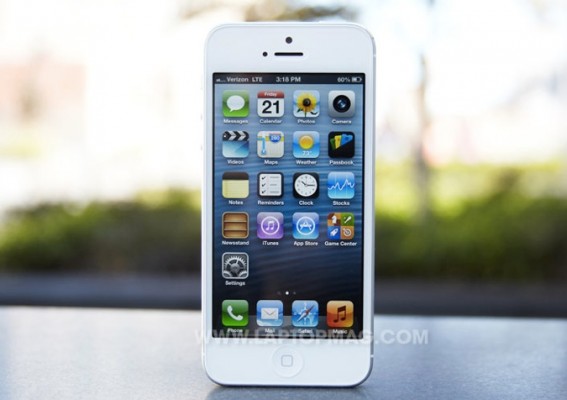Apple Claims Nearly Half of U.S. Smartphone Market

Android may be dominating the worldwide smartphone market, but when it comes to the United States Apple isn’t too far behind. New statistics show that the iPhone accounts for nearly half of the smartphone population in the U.S., falling less than 10 percent behind its Google rival.
A recent report from Kantar Worldpanel ComTech shows that the iPhone was responsible for 43.4 percent of the U.S. smartphone market share for a three month period ending in July. Android, comparatively, held 51.1 percent of the North American handset market during the same time period.
MORE: Top 10 Smartphones
Not only is Apple closing the gap behind Google in the smartphone arms race, the research firm’s data shows that the iPhone actually increased its market share while Android device usage decreased. Statistics from the same time frame last year indicated that Apple only snagged 35.6 percent of the U.S. smartphone market, while Android claimed a noticeably large chunk at 58.7 percent.
While Apple and Android continue to battle over the top spot, BlackBerry and Windows Phone are competing for the runner up title. Microsoft’s Windows Phone platform accounted for 3.5 percent of the U.S. smartphone market during that three-month period as BlackBerry only claimed 1.2 percent of the market. This represents a growth of 0.5 percent for Microsoft’s mobile OS, while BlackBerry’s share slipped from 1.9 percent to 1.2 percent when compared to sales in 2012.
The research firm’s report comes just after previous findings had suggested that Apple’s iOS platform had been slowing while Google’s Android OS continued to grow. According to statistics from Strategy Analytics published in early August, Android accounted for 80 percent of handsets worldwide during Q2 2013 as Apple iPhone sales dropped from 17 percent in Q2 2012 to 14 percent in Q2 2013. This was the lowest Apple’s mobile market share has been since Q2 2010.
A large part of Android’s success is in its diverse product portfolio and ability to target different audiences. Apple, on the other hand, has traditionally only launched one iPhone model at a time, but that could all change with its next major product release.
Stay in the know with Laptop Mag
Get our in-depth reviews, helpful tips, great deals, and the biggest news stories delivered to your inbox.
The Cupertino, Calif.-based company is rumored to release a flagship successor to the iPhone 5 known as the iPhone 5S and a cheaper iPhone variant believed to be called the iPhone 5C. While the iPhone 5S is expected to come with noticeable hardware upgrades and new features that could include a fingerprint sensor, the iPhone 5C will reportedly keep the current iPhone 5’s hardware and will sport a plastic shell available in multiple colors.
At the same time, Android handsets released earlier this year are poised to give Apple more competition than ever before. HTC’s aluminum-crafted flagship One is perhaps the only Android smartphone qualified to rival Apple in terms of build quality and design, while Samsung’s Galaxy S4 topped 20 million sales in just four months. Samsung is Apple’s biggest rival in the smartphone space, with a recent report from Flurry finding that 59 percent of devices out of a 45,000 sample of Android smartphones were made by the Korean tech giant.

